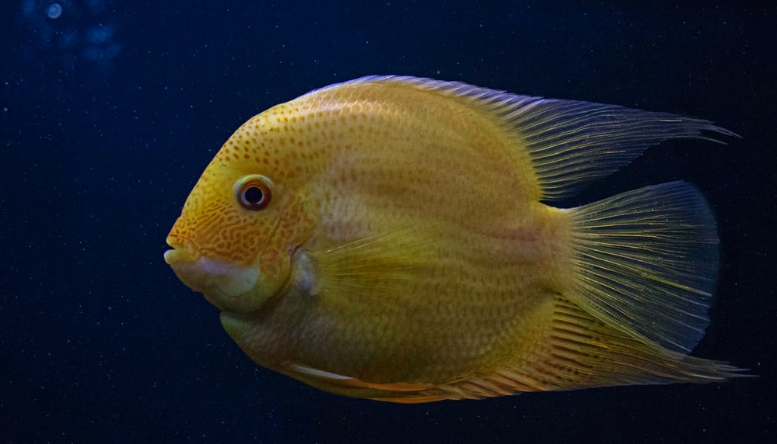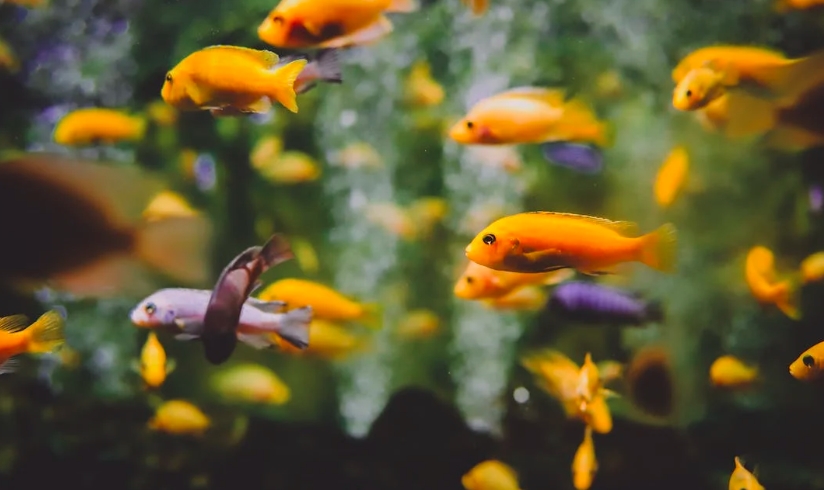Aquariums are miniature underwater habitats that provide a unique and captivating way to bring the undersea world to life in the comfort of your own home. An aquarium typically consists of a glass or plastic tank filled with water, an aquarium filter to keep the water clean, and various decorations, such as rocks, plants, and ornaments for aesthetic appeal. The most common inhabitants of an aquarium are fish, but many other aquatic creatures can be found in these unique habitats, including snails, crabs, shrimp, and even turtles.
From a practical perspective, owning an aquarium provides numerous benefits. Aquariums make great conversation pieces, adding a touch of beauty and intrigue to any room. They also help boost creativity and productivity, as well as reduce stress and anxiety. Furthermore, aquariums require minimal maintenance and can be tailored to fit any budget. Whether you are looking for a peaceful oasis or a vibrant centerpiece, an aquarium is an ideal way to bring the beauty of the undersea world into your home.
Types of Fish for Aquariums
Saltwater vs freshwater fish
When it comes to selecting a type of fish for an aquarium, one of the most important decisions to make is whether to choose freshwater or saltwater fish. Freshwater fish are usually easier to care for, as they are more tolerant of less-than-ideal water conditions. They are also usually less expensive and easier to find. Saltwater fish, on the other hand, have more specific needs and require more maintenance. They are also more expensive, so it is important to research the species of fish you are interested in before purchasing.

Popular aquarium fish species
There are many different types of fish that can be successfully kept in an aquarium. Some of the most popular species include guppies, mollies, tetras, platies, angelfish, and cichlids. Each of these species has its own unique characteristics and needs, so researching each species is important before choosing one.
Factors to consider when choosing fish for your aquarium
When selecting a type of fish for an aquarium, there are several factors to consider. The tank size and shape will determine the type of fish that can be kept. Additionally, the water temperature, pH, and hardness of the water should be taken into account when selecting fish. It is also important to consider the compatibility of the fish with each other and the size of the tank when stocking the aquarium. Finally, research should be done to ensure that the fish you choose have the same dietary needs and temperament.
Benefits of Keeping Fish in Aquariums
• Lower Stress: Studies have shown that the presence of fish in an aquarium can help reduce stress levels.
• Education: Keeping fish in an aquarium can be a great learning opportunity, both for children and adults.
• Relaxation: Watching fish swim around in an aquarium can be a calming and relaxing experience.
• Improved Mental Health: Studies have shown that the presence of an aquarium can help improve mental health by providing a calming environment.
Tips for Keeping Fish in Aquariums
• Ensure that the aquarium is the right size for the number of fish you plan to keep
• Regularly clean the tank and replace the filter
• Monitor the water parameters, such as pH, temperature, and hardness, to ensure they are suitable for the type of fish you are keeping
• Research the types of fish you are interested in to ensure they are compatible with each other
• Feed the fish a varied diet to ensure they are getting all the nutrients they need
• Monitor the fish for signs of illness or stress and act accordingly.
Setting Up an Aquarium
Aquariums provide a beautiful, calming environment for all kinds of aquatic life, from tropical fish to freshwater snails. Setting up an aquarium is not difficult, but it does require some time and effort to ensure that your aquarium is safe and suitable for the inhabitants. This guide will cover the basics of setting up an aquarium, from choosing the right size and type of aquarium to adding live plants and decor.
Choosing the Right Size and Type of Aquarium
The size and type of aquarium you choose will depend on what type of aquatic life you plan to keep. A larger aquarium is recommended if you plan to keep larger fish and invertebrates, such as cichlids or freshwater shrimp. Smaller aquariums are suitable for keeping small fish, such as guppies or neon tetras. Keep in mind that the larger the aquarium, the more expensive it will be to set up and maintain. There are also various types of aquariums to choose from, such as glass, acrylic, or even plastic. Each type has its own set of pros and cons, so it’s important to consider your budget and the type of fish you plan to keep before making your decision.
Setting Up the Aquarium Components
Once you have chosen the right size and type of aquarium, it’s time to set up the components. This includes a filter, a heater, and substrate (gravel or sand). The filter is important as it helps keep the water clean and removes debris, while the heater helps maintain a consistent water temperature. The substrate will provide a natural look and help to anchor the plants in place.
Adding Live Plants and Decor
Live plants are a great way to add some interest and color to your aquarium. There are a wide variety of plants to choose from, such as Anubias, Java Fern, and Hornwort. Live plants will also help to keep the water clean and provide a natural habitat for your fish. In addition to plants, you can also add various types of decorations to your aquarium. These can include rocks, driftwood, and artificial plants.
Benefits
• Provides a beautiful, calming environment
• Natural habitat for aquatic life
• Helps keep the water clean
• Adds interest and color to the aquarium
Tips
• Choose the right size and type of aquarium for your needs
• Make sure to set up the aquarium components properly
• Research the type of live plants and decor that are best suited for your aquarium
• Monitor the water quality regularly to ensure a healthy environment for your fish
• Change the water regularly to keep the aquarium clean and maintain a healthy environment.
Maintaining an Aquarium
Aquariums are a great way to bring a sense of beauty and relaxation to your home. They are also a great way to learn about the fascinating creatures that live in the water. But, in order for your aquarium to be a successful, healthy environment for the aquatic life, it must be properly maintained. The following is an outline of how to properly maintain an aquarium, including water quality management, caring for and feeding the fish, and common aquarium problems and how to solve them.
Water Quality Management
Water quality management is an important part of maintaining an aquarium. It is essential to test the water on a regular basis to make sure that it is free of toxins, chemicals, and other contaminants. Testing the water is also important to ensure that the pH balance, temperature, and salinity are all within the proper range for the fish and other aquatic life. In addition to testing the water, it is also important to perform regular water changes to keep the water clean and free of waste and bacteria.
Feeding and Caring for Fish
It is important to properly feed and care for the fish in your aquarium. Fish need a balanced diet that includes meat proteins, vegetables, and other foods. The type of food and the amount of food that is given should be based on the size and type of fish in the aquarium. It is also important to monitor the fish and make sure that they are healthy and not showing signs of stress or illness. Regular cleaning of the tank is also important to make sure that the water is free of debris, waste, and bacteria.
Common Aquarium Problems and How to Solve Them
Like any other ecosystem, aquariums can experience problems. Common problems include algae blooms, cloudy water, and fish illness. These problems can be solved by making sure that the water is properly tested and maintained, and that the fish are receiving the proper diet and care. Algae blooms can be prevented by reducing the amount of light that the aquarium receives, and cloudy water can be cleared up by performing regular water changes. Fish illness can be prevented by keeping the aquarium clean and free of toxins and chemicals, and by providing the fish with a healthy diet.
In summary, maintaining an aquarium can be a fun and rewarding experience, but it does require dedication and effort. Proper water quality management, feeding and caring for the fish, and solving common aquarium problems are all important elements of a successful aquarium. With the right knowledge and dedication, anyone can enjoy a healthy, thriving aquarium.
Health and Disease Management
Signs of Healthy Fish
Healthy fish have bright, vibrant colors and have a healthy appetite. They have a smooth body, fins, and scales with no visible lesions, parasites, or discoloration. There should be no mucus or other discharge from their skin, eyes, or gills. The eyes should be clear and the fins should be erect. Their swimming behavior should be active and normal.
Common Fish Diseases and Their Symptoms
Fish diseases can be caused by environmental factors, parasites, bacteria, viruses, and fungi. Common fish diseases include Ich, Fin Rot, Dropsy, Velvet, and Costiasis.
Ich is an external parasite that causes white spots to appear on the fish’s body. Fin Rot is caused by bacterial infections and is characterized by frayed or disintegrating fins. Dropsy is a bacterial infection that results in a swollen abdomen and protruding scales. Velvet is a parasitic infection that causes a gold or brownish dust-like coating on the fish’s body. Costiasis is a bacterial infection that causes red streaks or patches on the body.
Preventative Measures and Treatment Options for Fish Diseases
Preventative measures for fish diseases include proper water quality, maintaining a healthy diet, and quarantine procedures for new fish. Aquariums should be regularly tested for ammonia, nitrite, and nitrate levels. Fish should be fed a balanced diet of high-quality food. New fish should be quarantined for two weeks before being introduced to the tank.
Treatment options for fish diseases include temperature manipulation, medications, and salt baths. Raising the water temperature can help to speed up the life cycle of parasites and increase the effectiveness of medications. Medications can be used to treat bacterial, viral, and fungal infections. Salt baths can be used to treat external parasites and reduce inflammation.
Benefits
• Improved water quality
• Nutritious diet
• Proper quarantine procedures
• Temperature manipulation
• Medications
• Salt baths
Tips
• Regularly check water quality
• Feed a balanced diet
• Quarantine new fish for two weeks
• Raise water temperature to treat parasites
• Use medications to treat bacterial, viral, and fungal infections
• Use salt baths to treat external parasites and reduce inflammation
Advanced Aquarium Topics
Breeding Fish and Raising Fry
Breeding fish and raising fry is a challenging yet rewarding process in the aquarium hobby. It requires a great deal of knowledge and experience to successfully breed fish and raise healthy fry. The first step in breeding fish is selecting compatible species and creating the right environment for them. This includes providing enough space, suitable water parameters, and ample food. It is also important to choose fish of the right size and age, to ensure that they are ready and healthy enough to breed.
Once the fish have been chosen, the next step is to carefully observe their behavior and provide the best possible conditions for breeding. This includes adjusting the water temperature and other parameters, providing the right foods, and ensuring that the fish are comfortable in their environment. If successful, the fish will spawn and the fry will need to be separated from their parents and raised in a separate tank.
Raising fry requires a separate tank or aquarium with the correct water parameters and plenty of food. It is important to monitor the fry and adjust the tank parameters as necessary. If done correctly, the fry should grow and develop into healthy adult fish.
Creating a Community Aquarium
Creating a community aquarium is a great way to add variety, color, and life to your aquarium. A community aquarium is one that contains more than one species of fish, and the species chosen should be compatible with each other. It is important to research and select fish that are compatible in terms of size, temperament, water parameters, and other requirements.
When setting up a community aquarium, it is important to provide plenty of space and plenty of hiding spots for the fish. This will help reduce aggression and create a peaceful environment for the fish to thrive in. It is also important to provide the right type of food, as different species of fish require different types of food.

Advanced Aquarium Setups
Advanced aquarium setups such as reef tanks and planted tanks are becoming increasingly popular in the aquarium hobby. These setups require a great deal of knowledge and experience to set up and maintain.
A reef tank is a type of aquarium that mimics the natural environment of a coral reef. It requires careful attention to water parameters, lighting, and filtration to replicate the natural environment as closely as possible. A reef tank also requires specialized equipment such as protein skimmers, calcium reactors, and other filtration systems.
Planted tanks are aquariums that contain live plants. These tanks require careful attention to water parameters, lighting, and fertilization to create a healthy environment for the plants to thrive in. Additionally, they require special equipment such as CO2 systems and special lighting to provide the right conditions for the plants.
Overall, advanced aquarium setups require a great deal of time and effort to set up and maintain. However, they can be very rewarding and provide a unique and beautiful display in the home.
Conclusion
In conclusion, there is a lot to learn about fish and aquariums. From the different types of fish, to the various types of tanks, to the complex needs of the fish, there is much to know. Understanding the basics of fish and aquariums is important in order to maintain a healthy aquatic environment and to ensure that your fish are happy and healthy. With the right knowledge and a little patience, you can create a beautiful aquatic environment for your fish and enjoy the beauty and tranquility of an aquarium for many years to come.
FAQs
1. What types of fish can I keep in my aquarium?
The type of fish you can keep in your aquarium depends on the size, the water parameters, and the other aquatic species in the tank. Common fish that can be kept in an aquarium include tetras, guppies, mollies, platys, angelfish, and cichlids.
2. How many fish can I keep in my aquarium?
The number of fish you can keep in your aquarium depends on the size of the tank and the filtration system. Generally, it is recommended to have 1 inch of fish for every gallon of water.
3. What is the best way to maintain a healthy aquarium?
The best way to maintain a healthy aquarium is to keep the water temperature stable, perform regular water changes, and use a filter system. Additionally, it is important to feed the fish the right amount of food and ensure that the tank is not overcrowded.
4. How often should I perform water changes?
The frequency of water changes depends on the size of the tank and the number of fish in the aquarium. Generally, it is recommended to perform water changes every two weeks or so.
5. How do I test the water parameters in my aquarium?
The best way to test the water parameters in your aquarium is to use an aquarium test kit. The test kit will measure the levels of ammonia, nitrate, nitrite, and pH in the water.
6. What type of filter should I use in my aquarium?
The type of filter you should use depends on the size of the tank and the number of fish in the aquarium. Generally, a combination of a mechanical filter, a biological filter, and a chemical filter is recommended.
7. What type of food should I feed my fish?
The type of food you should feed your fish depends on the type of fish you have. Generally, it is best to feed your fish a variety of foods such as flakes, pellets, frozen food, and live food.
8. How often should I feed my fish?
The frequency of feeding your fish depends on the type of fish you have. Generally, it is best to feed your fish small amounts two or three times a day.
9. What is the best way to control algae in my aquarium?
The best way to control algae in your aquarium is to keep the water parameters stable, reduce the amount of light, and perform regular water changes. Additionally, it is important to reduce the amount of food you are feeding your fish and remove any uneaten food.
10. What should I do if my fish is sick?
If your fish is sick, it is important to isolate the fish from the rest of the tank and treat the water with a medication that is appropriate for the specific illness. Additionally, it is important to monitor the water parameters and ensure that the fish is eating.


















